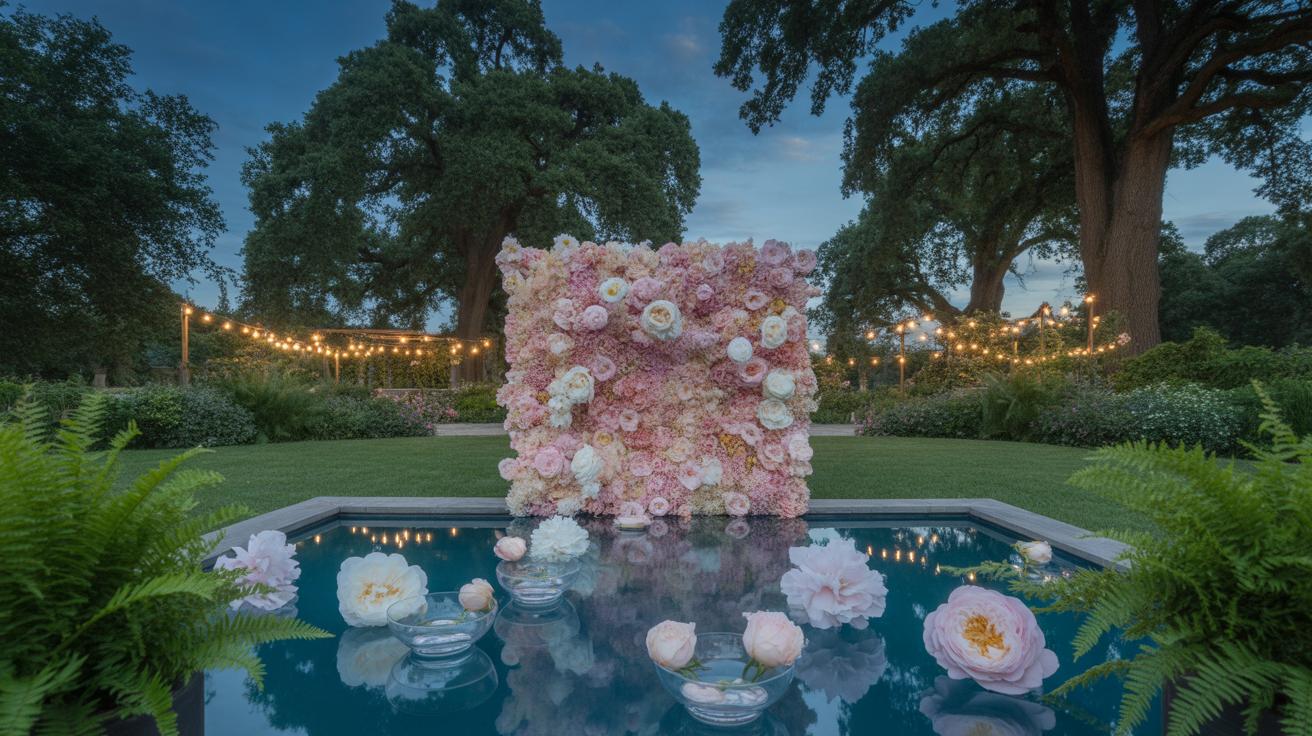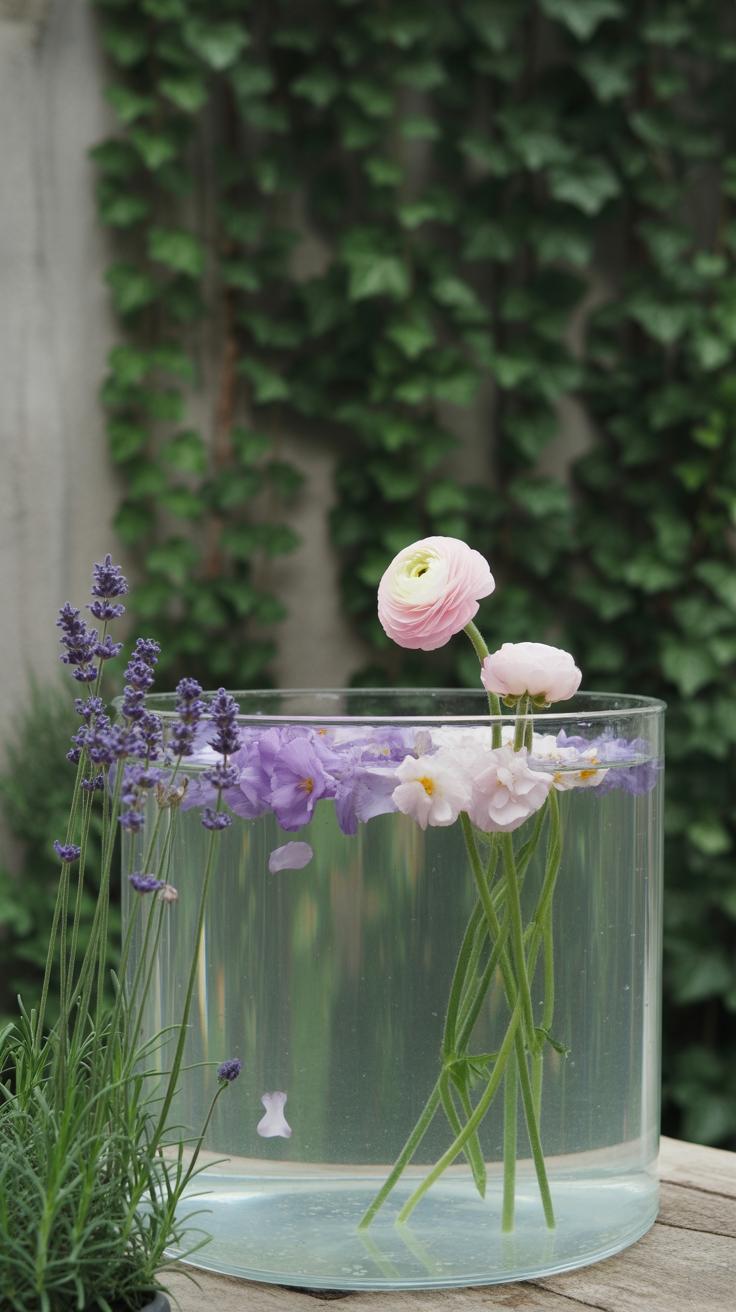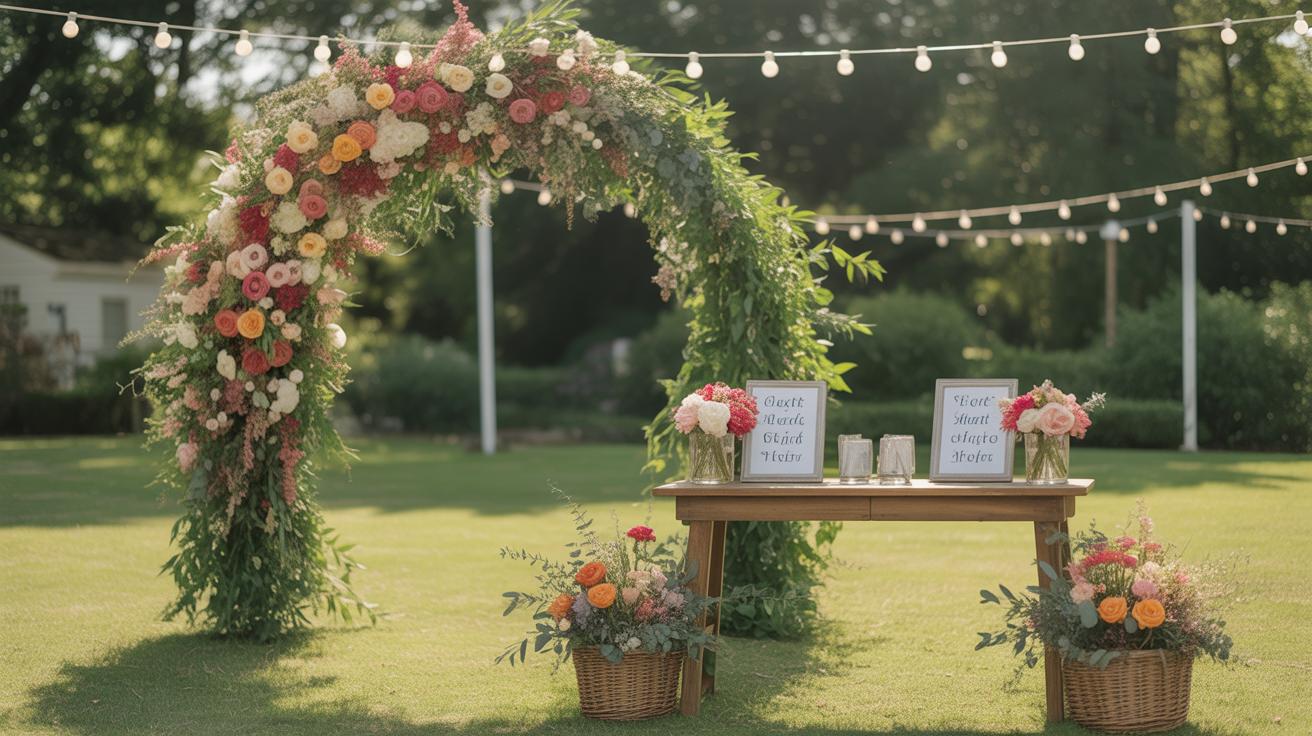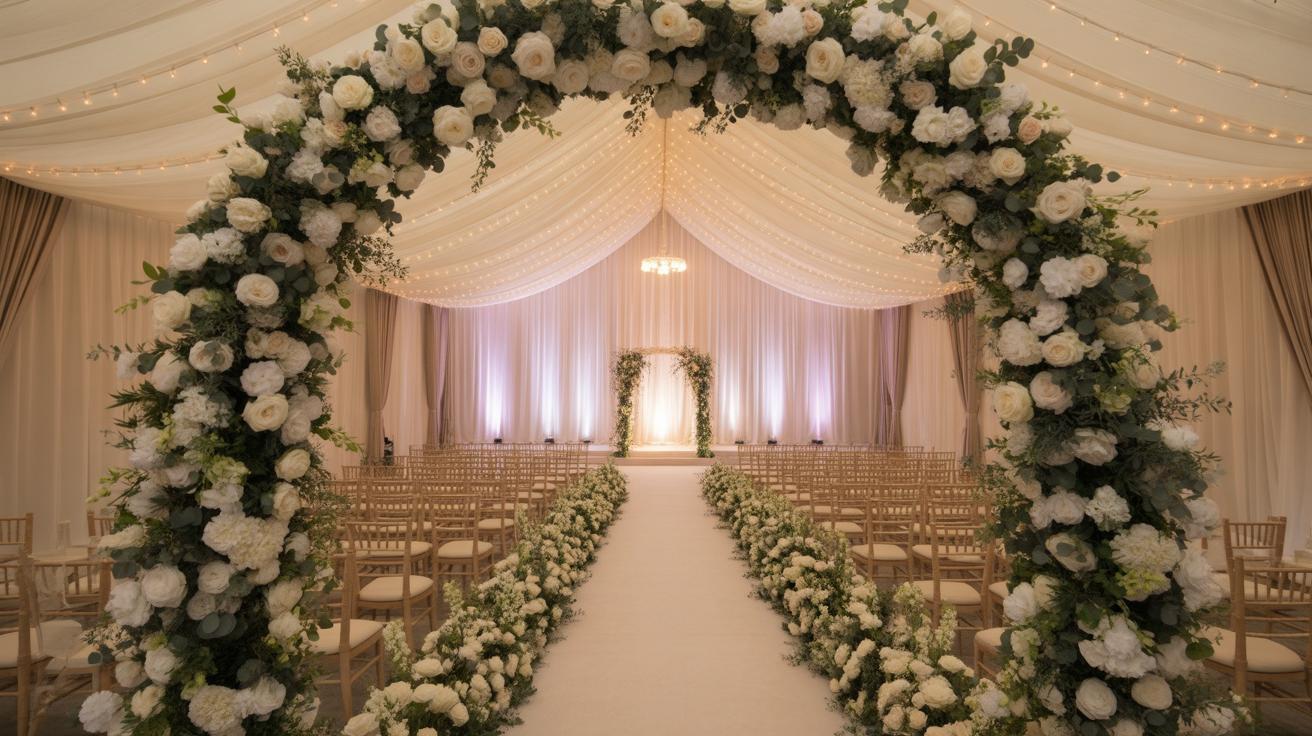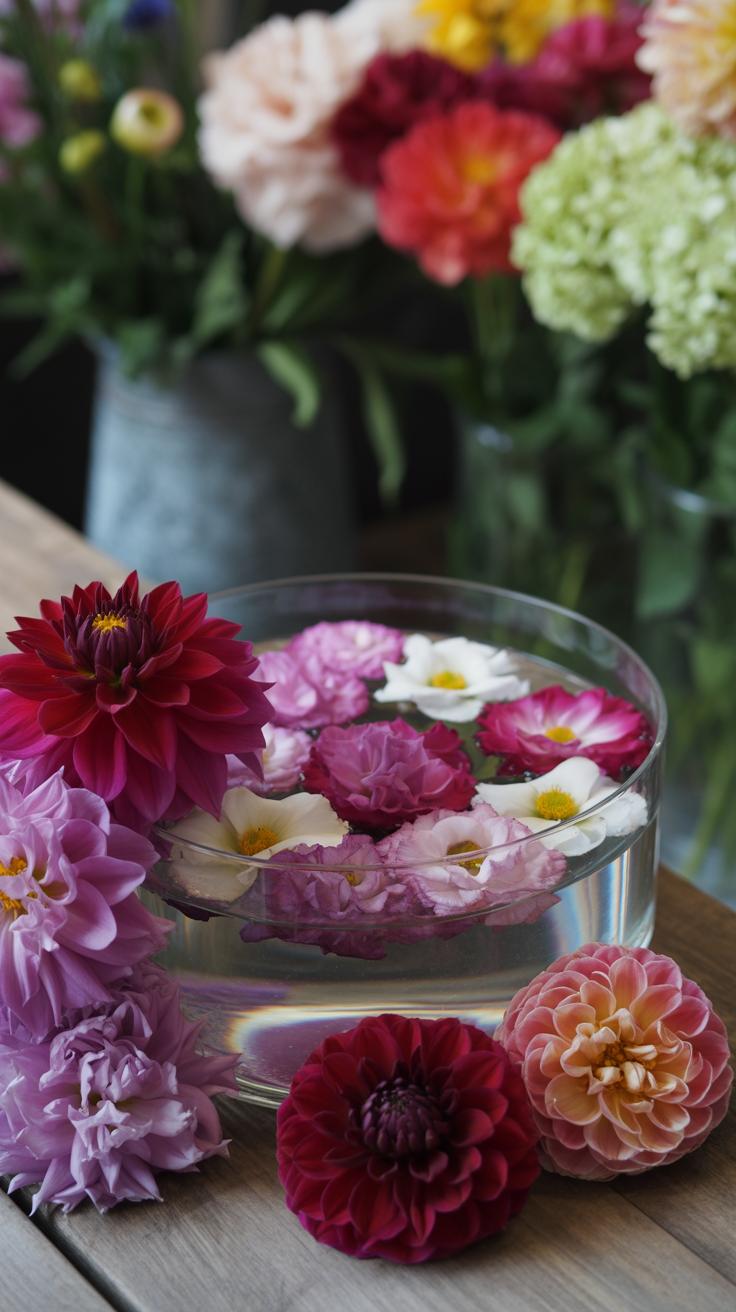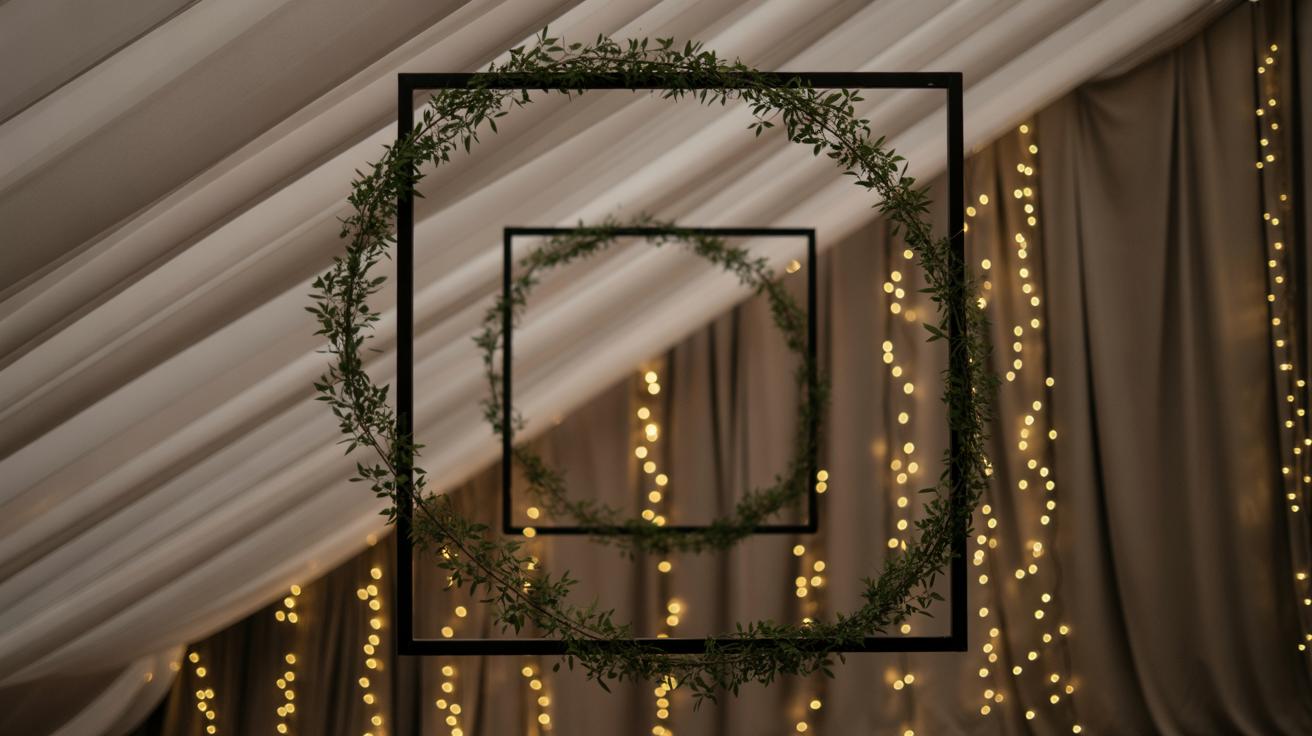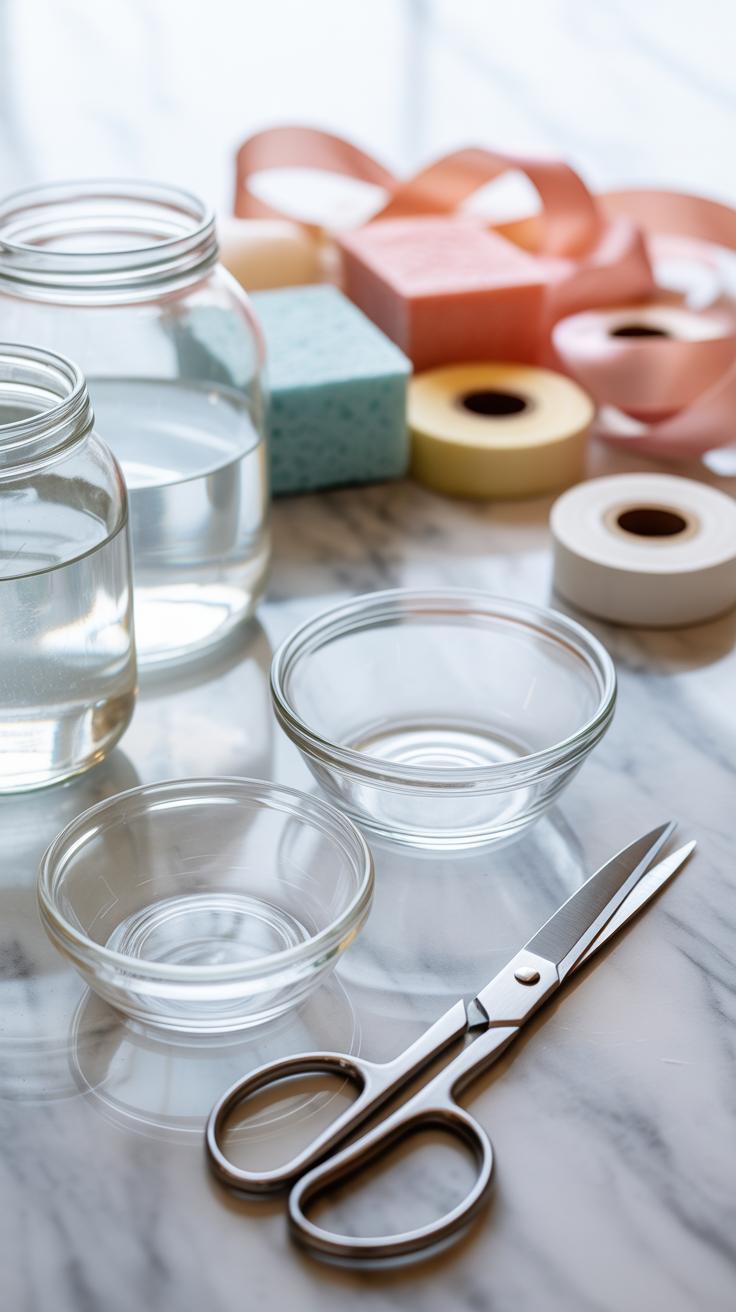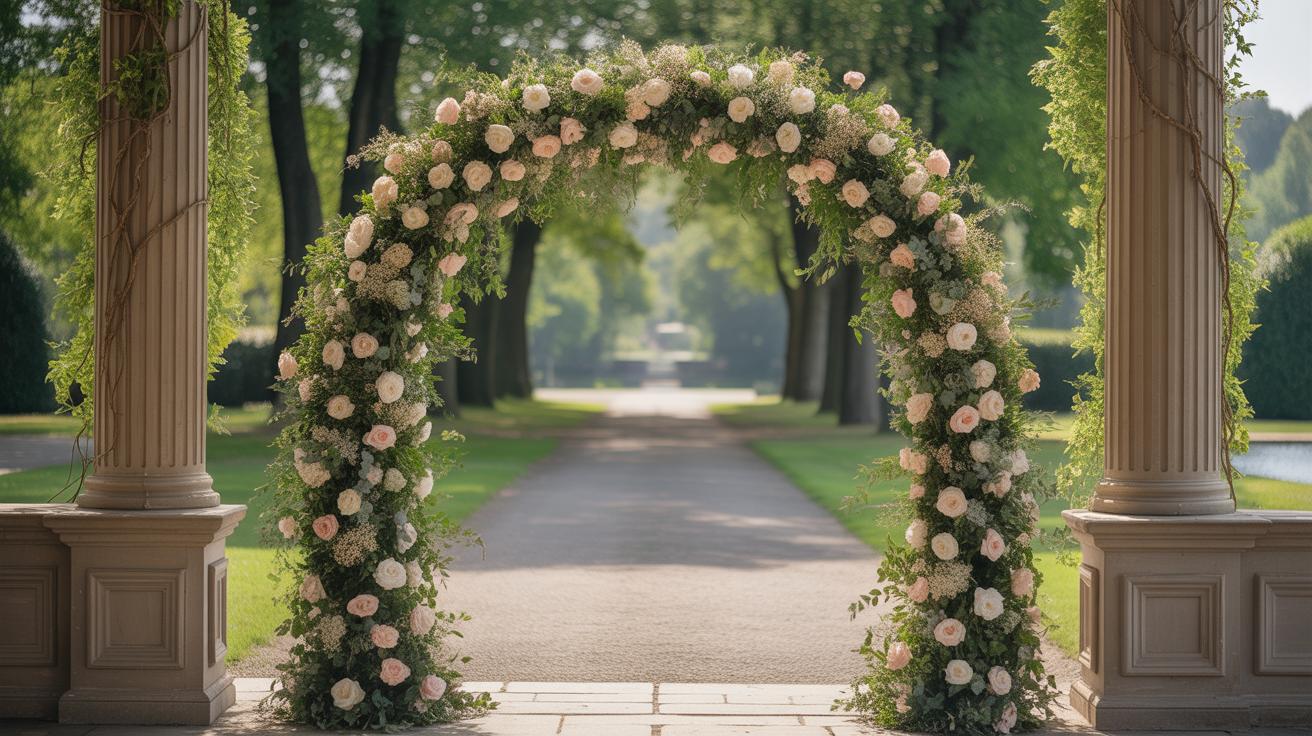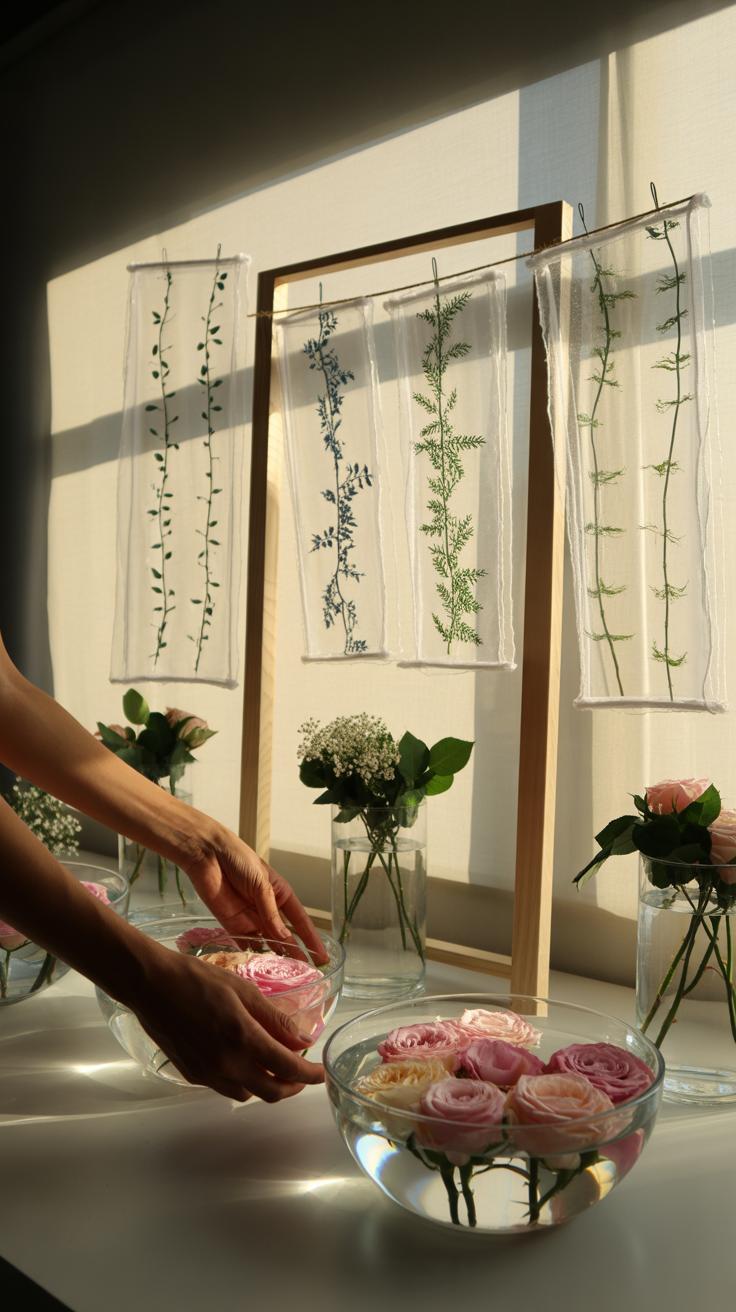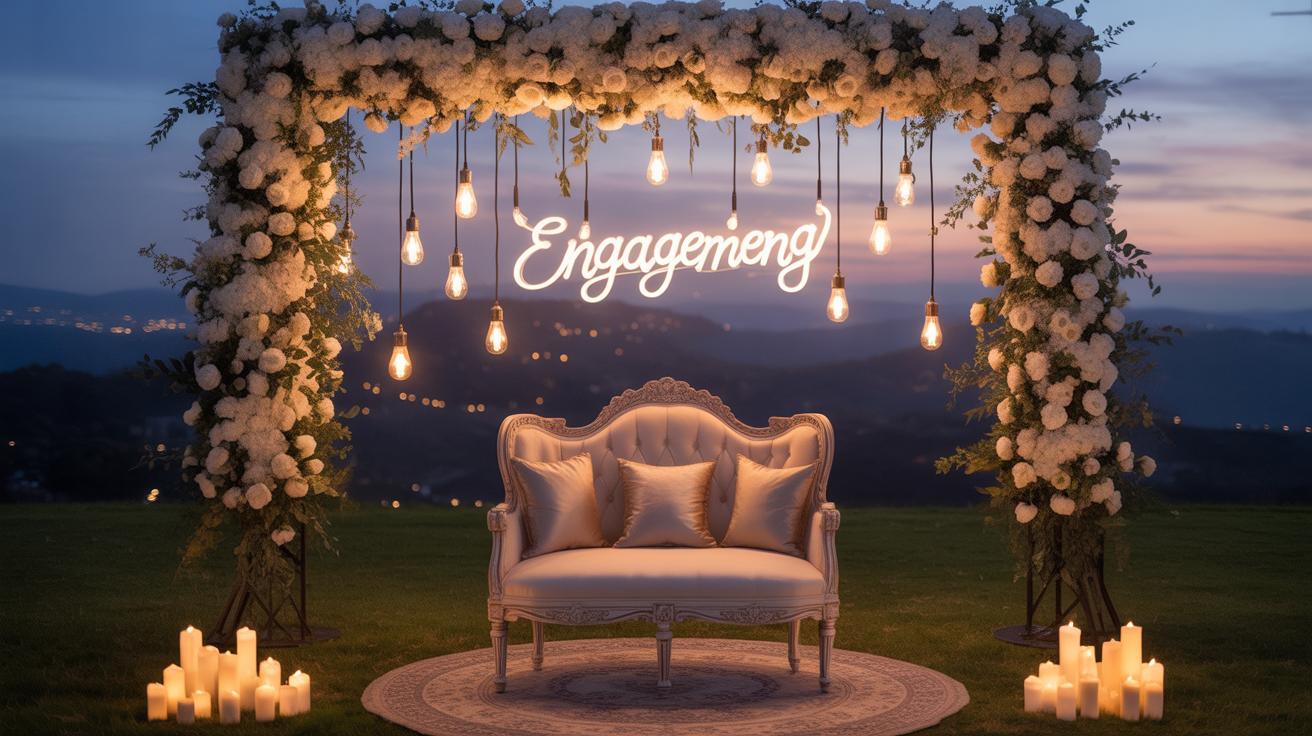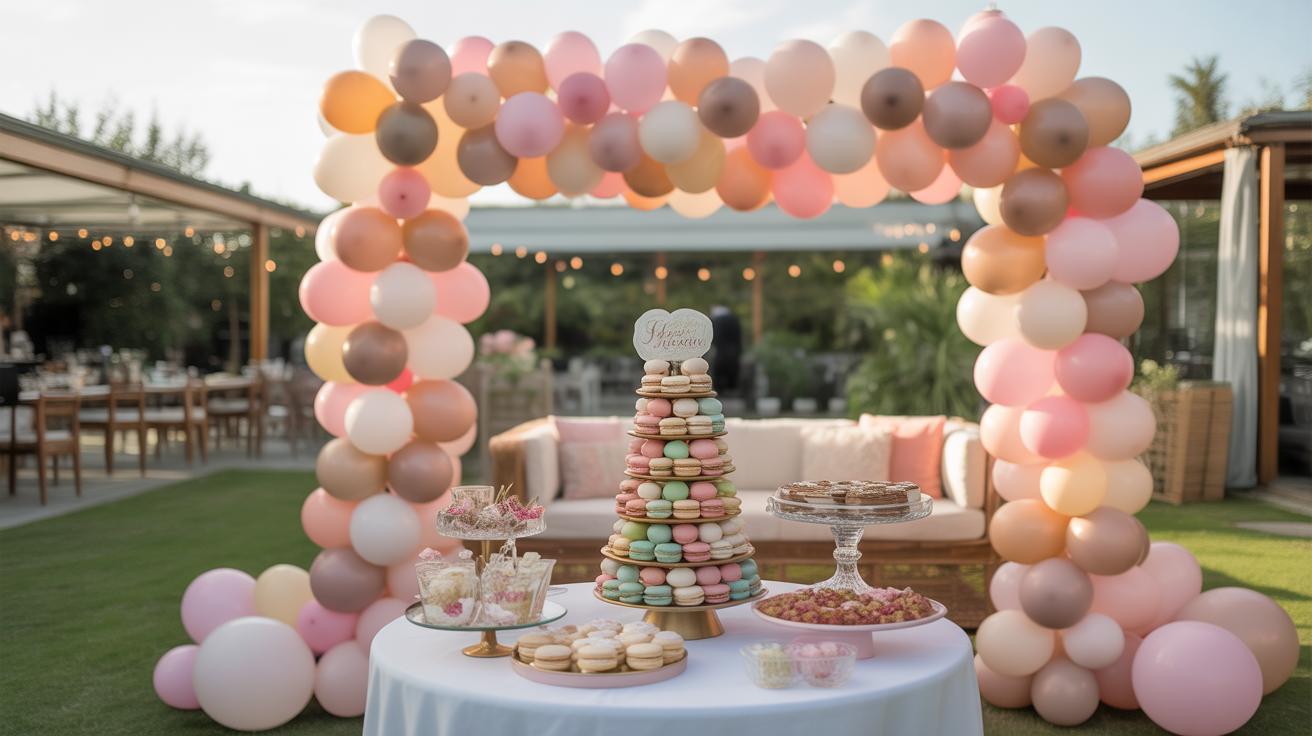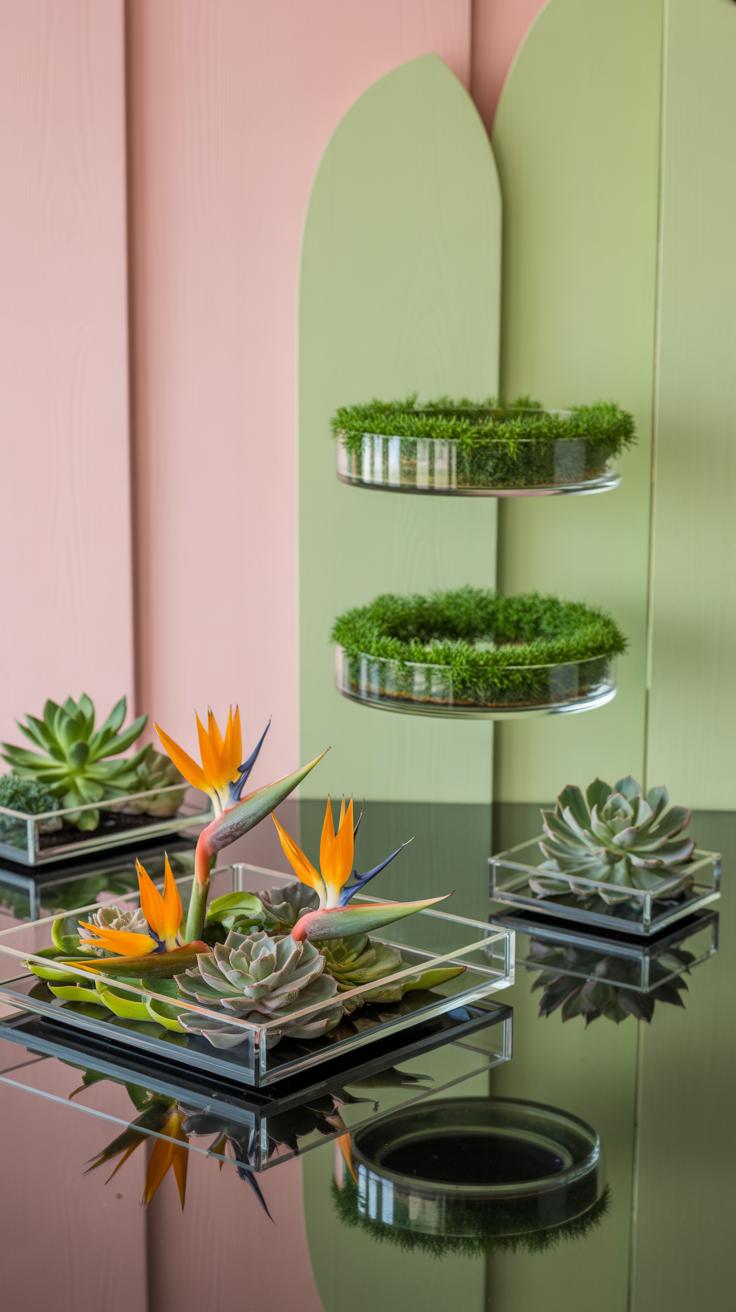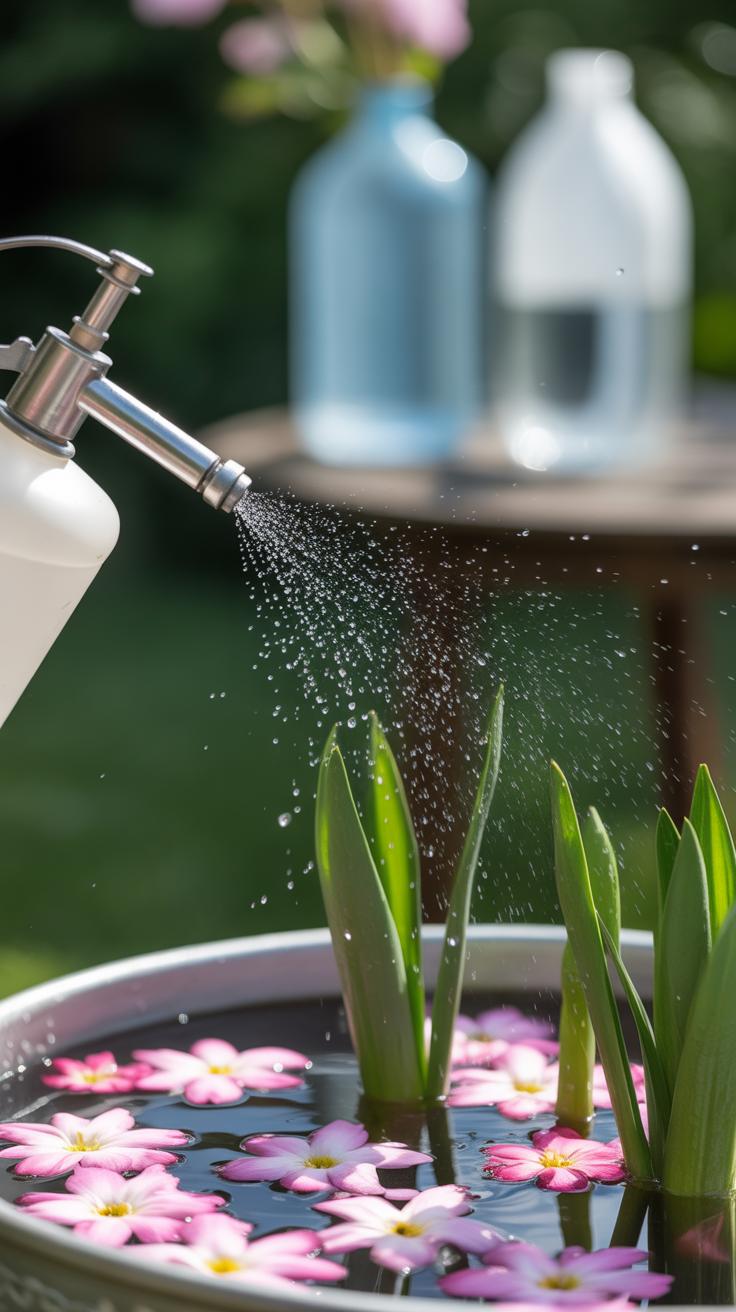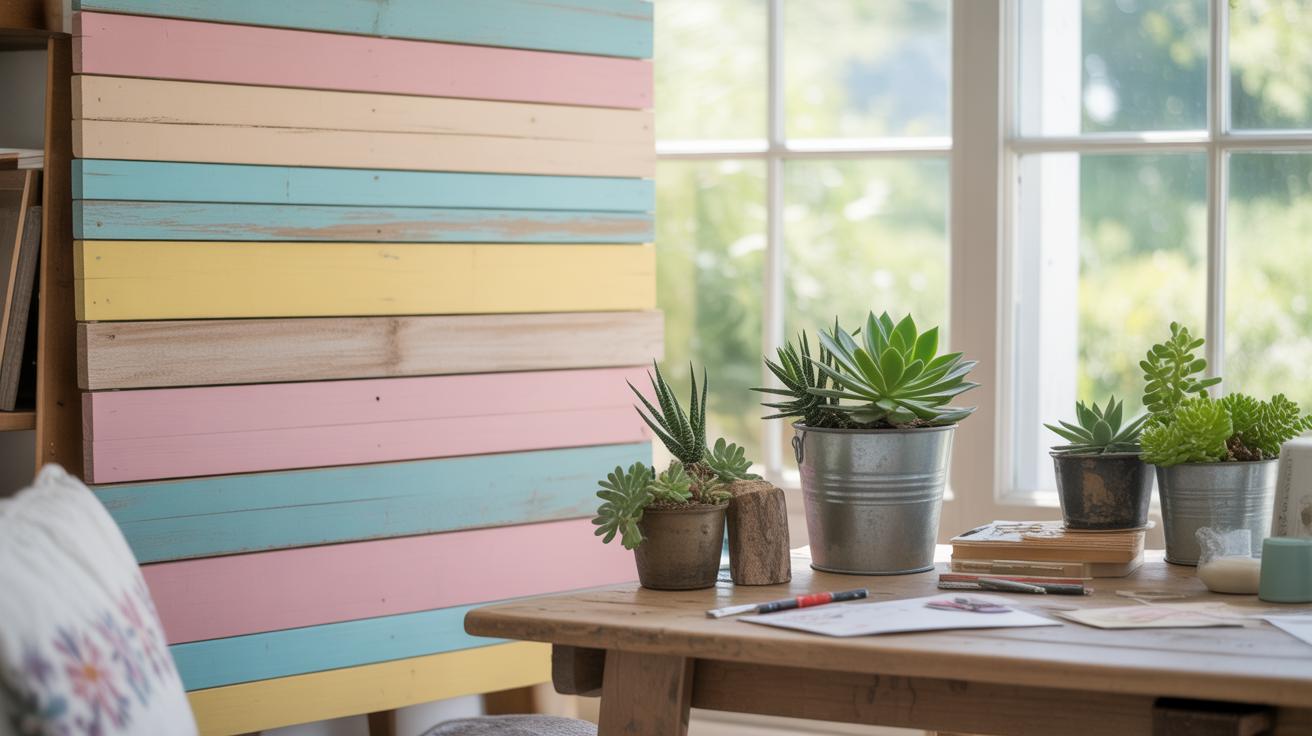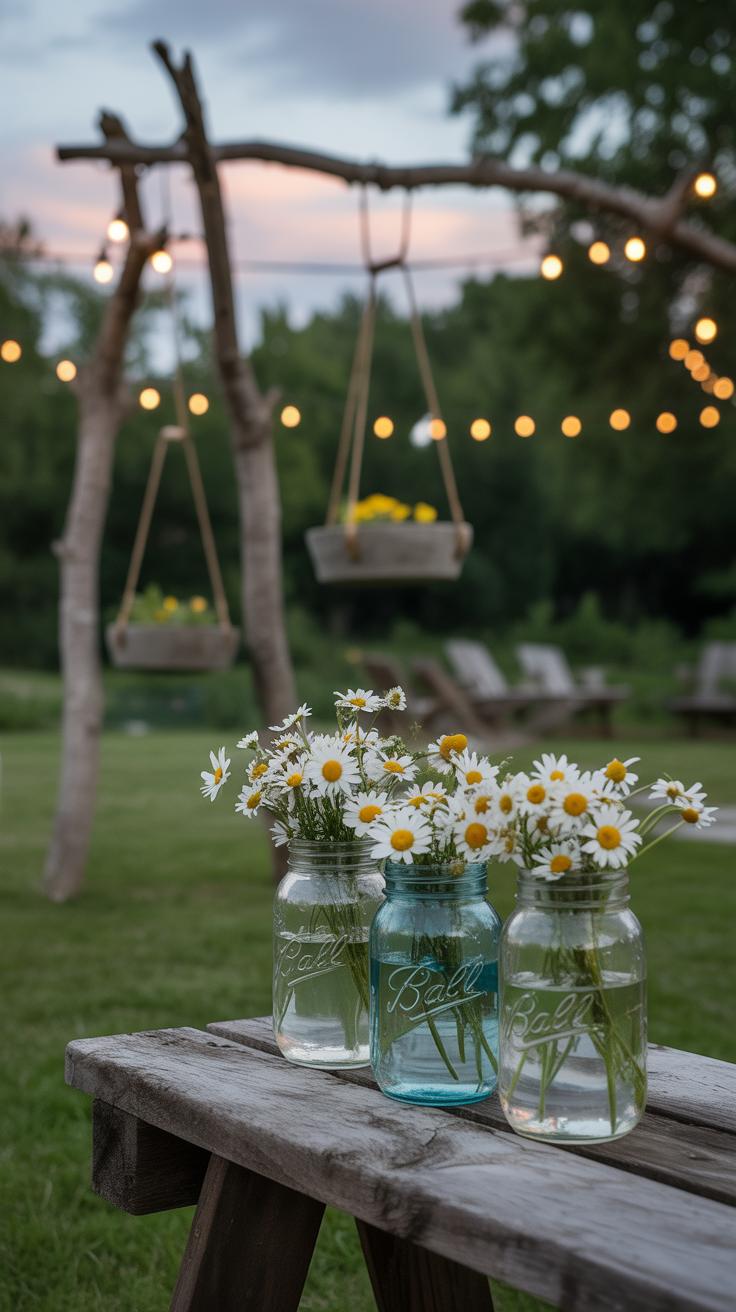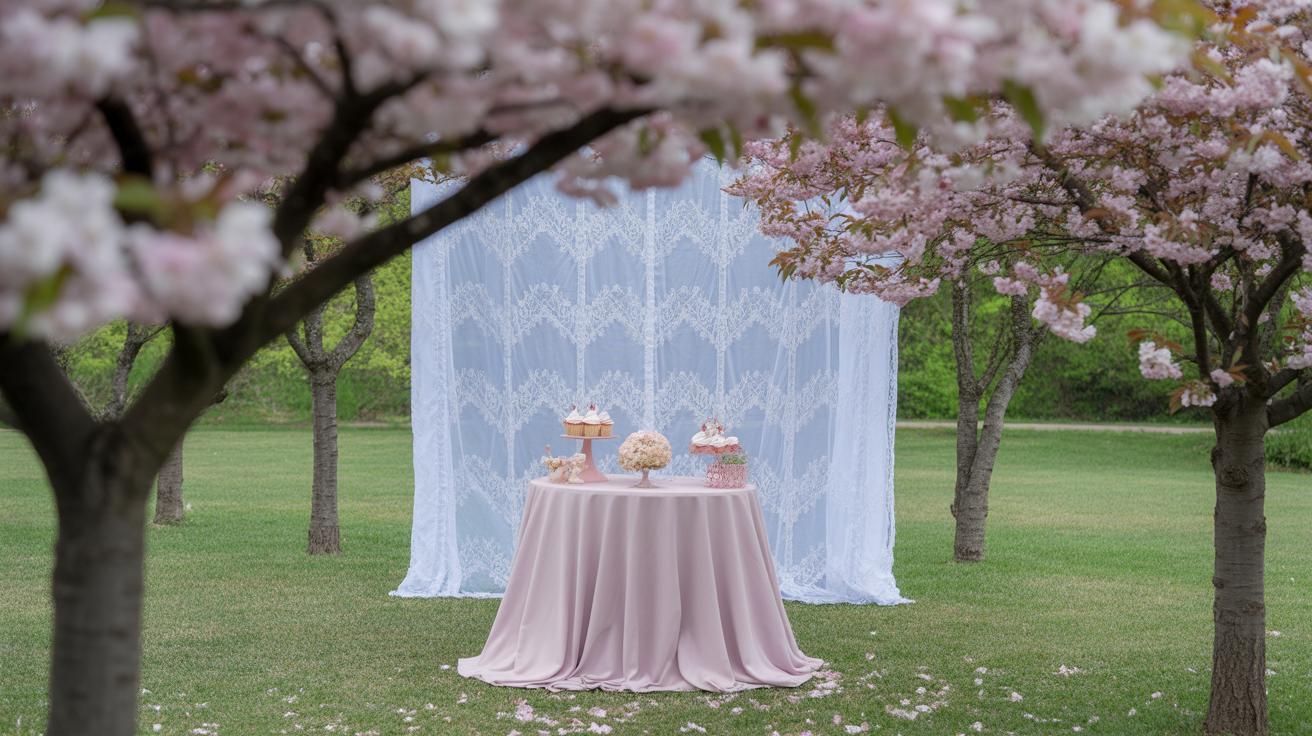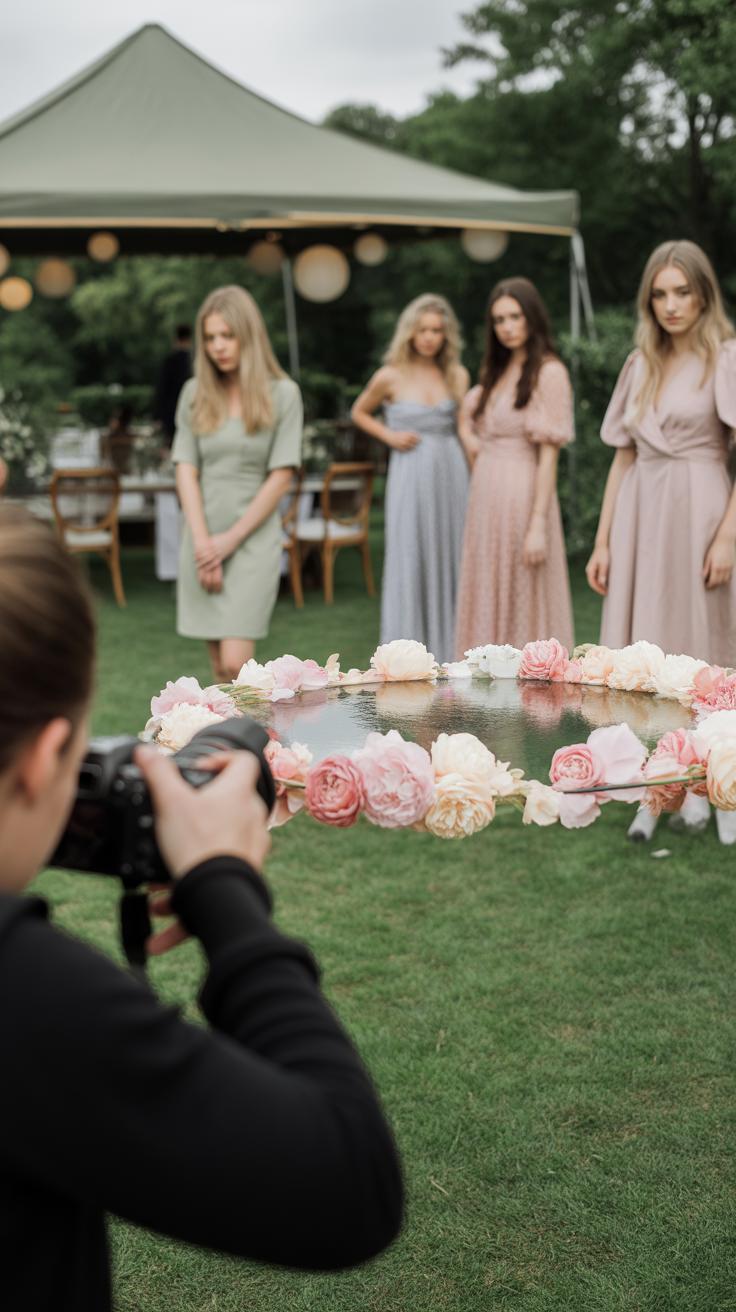Introduction
Dreamy floating flower backdrops add charm and a magical vibe to any event. They bring nature’s beauty into your space in a unique and eye-catching way. Floating flowers create a sense of lightness and elegance that makes your event unforgettable. Whether for a wedding, party, or photo shoot, these backdrops offer a stunning visual effect.
This article will explore simple ideas to create your floating flower backdrop. We will cover how to design the backdrop, which flowers and materials work best, and helpful tips. By the end, you will have all you need to craft a beautiful floating flower backdrop that will impress your guests and add a dreamy atmosphere to your special occasion.
Understanding floating flower backdrops
Floating flower backdrops refer to floral arrangements designed to appear as if they are suspended in mid-air, without visible supports or heavy frameworks. These installations use transparent materials like acrylic panels, fine wires, or strategically hidden supports to create a sense of flowers hovering against walls or open spaces. Their main purpose is to add a light, airy, and visually intriguing element to an event or space.
What sets them apart from traditional floral displays is the way they interact with their surroundings. Instead of resting on a surface or draping down, flowers seem to float, inviting viewers to look closer and experience the arrangements differently. This creates a striking visual appeal, often evoking curiosity or wonder.
Floating flower backdrops are commonly used at weddings, photo booths, product launches, and upscale parties—places where a unique, elegant ambiance is desired. They bring a delicate touch while giving the impression of being both modern and natural at once.
The floating effect comes mainly from the clever use of transparent or nearly invisible supports. Flowers appear to hover, casting soft shadows and allowing light to pass through, which enhances depth and dimension quite unlike traditional solid-looking backdrops. This look conveys a sense of lightness that catches attention without overpowering other décor.
You’ll often see this effect at garden-themed weddings, art exhibitions, or luxury brand events—settings where a subtle blend of nature and innovation is appreciated. The whimsical quality makes floating flower backdrops stand out, offering a delicate enchantment you don’t typically get with plain flower walls or standing arrangements.
Floating flower backdrops suit a range of occasions and locations, each benefiting from their unique charm. Some common settings include:
- Weddings: Especially during ceremonies or receptions, floating flowers provide a soft, romantic atmosphere without blocking views or feeling bulky.
- Photo booths: The floating design creates an interesting and photo-friendly environment, making pictures look unexpected and creative.
- Corporate events and launches: Brands aiming for a fresh, stylish impression use floating flowers to elevate space without clutter.
- Special celebrations: Birthdays, anniversaries, or intimate parties benefit from the added dimension flowers bring, lending an ethereal feel.
- Boutiques or galleries: Small retail or art spaces often use floating arrangements to draw the eye upward and spark curiosity without taking up floor space.
In these contexts, floating flower backdrops work well because they balance elegance with modern design. They don’t just decorate—they transform spaces in subtle ways that invite interaction and visual exploration.
Choosing the right flowers for floating backdrops
Picking flowers for a floating backdrop can feel a bit tricky at first. You want blooms that are just the right size—not too bulky, but not so tiny they get lost in the arrangement. The durability matters too, especially if your event lasts several hours or takes place outdoors. Some flowers hold up better suspended in air or water without wilting too quickly, which is key for maintaining that magical vibe.
Flowers like garden roses, ranunculus, and dahlias tend to float well because they have a slightly sturdy structure. Also, anemones and orchids often look stunning when suspended—they almost appear to hover naturally. I remember once using peonies, which are gorgeous but quite heavy and not always the easiest to keep afloat for long periods.
When it comes to color, think about your event’s theme and mood. Soft pastels often create a dreamy, subtle effect, while bold reds or purples can add drama. You could go monochromatic for elegance or mix contrasting colors for a more lively statement. Sometimes, combining whites with a splash of green or blush creates a balance that’s hard to beat. What vibe do you want your backdrop to evoke? That question can help steer your choices quite a bit.
Materials and tools needed to create floating flower backdrops
Structural supports and frames
To create that dreamy floating effect, the backbone is definitely your support system. Think of frames made from lightweight metals like aluminum or steel, which offer strength without being too bulky. PVC pipes are popular too—easy to shape and build around. Sometimes, clear acrylic sheets come into play, giving the illusion flowers are suspended in air. It’s a bit about what style you want, really.
Wire grids or mesh panels can be handy as well. They hold stems firmly but stay subtle so the flowers seem to hover on their own. If you want a floating arch or a large panel, framing with wooden dowels works, though it’s heavier and less flexible.
Sometimes I’ve found balancing sturdiness with ease of setup tricky. You want something stable but not a hassle to carry or assemble on-site. So, you might lean toward modular frames that snap together. That’s a bit of trial and error, honestly.
Water and preservation methods
Keeping flowers fresh when floating requires more than just a splash of water. Containers filled with water at the base can feed stems, but often the magic is in using water tubes or floral foam embedded in the frame. These help flowers stay hydrated without dripping or sagging.
Gel beads or clear floral gel are another route—they hold moisture and add weight to keep blooms in place while preserving their shape. Plus, gels reduce the mess. I once tried putting flowers directly on a water surface; honestly, it looked beautiful at first but wilted quickly.
You might also try misting flowers periodically to keep petals lively, especially during warmer events. Refrigeration before setup definitely extends freshness, though flowers can still behave unpredictably.
Preservation sprays, like anti-transpirants, are optional but useful. They slow water loss and help maintain that flawless floating look longer than you might expect. And when in doubt, fresh flowers paired with these hydration tricks usually do the job.
Stepbystep guide to assembling your backdrop
Preparing flowers for floating
Start by selecting flowers that can hold up well in water. Blooms like roses, carnations, and chrysanthemums tend to last longer. You want sturdy petals, nothing too delicate; otherwise, they’ll wilt quickly or fall apart.
Trim the stems, leaving about one to two inches to help the flowers float nicely without sinking. Then soak them in cool water for a few hours or overnight. This rehydrates the blooms and helps them stay fresh longer. Sometimes, I forget this step and end up with droopy petals that ruin the whole effect. So, trust me, don’t skip soaking.
If you like, remove leaves below the water line to prevent murky water and faster decay, but keep the blooms intact. It’s a bit of trial and error figuring out which flowers last longest for you.
Arranging flowers on the structure
Once your flowers are ready, think about how you want to achieve that floating effect. There are a few ways:
- If using a water container, gently place flowers directly on the surface. They will naturally float, creating a calm, airy vibe.
- If working with a frame, you can secure flowers using clear fishing line or floral wire. Tie or attach them tightly enough to stay put without crushing delicate petals.
- Alternatively, some people use small floral foam blocks soaked in water, inserted into the frame. Stick stems into the foam so blooms appear suspended but stay hydrated.
Arrange flowers starting with larger blooms to create a base, then fill gaps with smaller flowers or greenery. Don’t worry about perfection; uneven placement often looks more natural and interesting.
Give a quick step back now and then to check your progress from different angles. Floating flower backdrops feel magical when the layers catch light just right, so a bit of adjusting helps.
Creative design ideas for floating flower backdrops
Playing with lighting can completely shift how your floating flower backdrop feels. Soft, warm lights tucked behind or above the arrangement can add subtle depth, making flowers appear to glow gently. You might try string lights woven through the flowers themselves, casting delicate shadows or sparkles that flicker as the lights dim or pulse. Colored lighting opens up even more possibilities—imagine soft pinks or gentle blues washing over white blooms to suggest a dreamy twilight vibe. Sometimes, simple spotlights angled just right can emphasize texture and create surprising layers of light and dark.
Shapes and heights in your flower arrangement really matter too. Don’t just settle for a flat, uniform wall. Instead, mix rounded clusters with sharp, pointed shapes to keep the eye moving. Varying the elevation of flowers—from hanging vines to blooms set on raised segments—adds visual interest. You could float some flowers closer to the foreground and let others recede, creating an illusion of depth. Oddly enough, sometimes an imperfect or slightly chaotic layout feels more natural and inviting than something too symmetrical.
Consider unusual forms like wave-like curves or diagonal lines instead of just rectangular grids. That shift alone can make your backdrop feel more dynamic and less predictable. I’ve seen a setup where some flowers nearly hung at eye level while others stretched toward the ceiling, and it made the entire space feel like a secret garden — unexpected and immersive. Wouldn’t you agree that playing with these subtle variations keeps your design fresh and captivating, rather than static?
Maintaining and preserving your floating flower backdrop
Keeping a floating flower backdrop fresh throughout an event is a bit of a balancing act. Water and humidity control play a big role, and you might find yourself adjusting these factors on the fly. Since flowers draw moisture from their surroundings, maintaining a cool environment helps delay wilting. But too much humidity can make petals limp or even promote mold—that’s the tricky part.
Try to mist your flowers lightly with water at intervals, but not so much that droplets pool or create sogginess. If your backdrop uses floral foam or water tubes, topping them off frequently is key. I noticed once that a single neglected tube meant part of my arrangement started drooping, which was awkward but fixable.
When flowers inevitably fall or get damaged, be prepared with some tools at hand. Clear floral tape, wire, or even small clips can help you reattach blooms quickly. It helps to have extras matching the flowers on the backdrop so you can swap out any wilting pieces discreetly. Sometimes a quick pin here or a bit of wire there restores the overall look almost instantly.
Think of it as managing a delicate ecosystem; a little attention here and there can keep the magic alive much longer than expected. Have you ever tried to fix a backdrop mid-event? It’s a bit nerve-wracking but rewarding when nobody notices the repairs.
Budgetfriendly floating flower backdrop options
Creating a floating flower backdrop doesn’t have to drain your wallet. If you’re mindful of costs, there are plenty of ways to achieve that magical vibe without splurging. One strategy many turn to is using artificial or dried flowers. Faux blooms can look surprisingly real, especially when mixed well, and won’t require watering or constant attention. Plus, dried flowers add a unique, rustic charm that feels quite timeless. If you don’t mind a slightly different texture or color tone, these choices can be both economical and practical.
When working with faux or dried flowers, layering them on lightweight materials like fishing wire or thin frames keeps the “floating” effect intact without extra weight. It’s a trade-off: you might lose some natural scent, but the low upkeep might be worth it for your event’s timeline.
For those who enjoy getting hands-on, simple DIY hacks can cut costs a lot. Instead of custom floral foam or pricey structures, try using clear thread, old embroidery hoops, or repurposed curtain rods. Wire grids bought cheaply at hardware stores also work well as a base.
Some cheap styling tricks include:
- Clipping flowers with hot glue instead of floral tape saves time and sticks firmly.
- Combine smaller, filler blooms with a few statement flowers to keep costs down but still feel lush.
- Use greenery or leaves you can forage locally—sometimes natural foliage creates interesting shapes and depth.
Creating your floating flower backdrop with these methods might take a bit longer, and maybe it won’t have the “fresh” feel of a fully live setup. But depending on your event and budget, it often works better than expected. Ever wondered if a cheaper backdrop could actually surprise your guests? It just might.
Inspiration from real events and photo shoots
Wedding floating flower backdrops
You might have seen floating flower backdrops at weddings that instantly catch your eye, creating almost a dreamy aura around the ceremony. Many couples opted for these setups behind the altar or as a stunning wall at the reception. I recall one wedding where pale pink and white blooms floated gently within translucent frames, making the vows feel a little more intimate, almost like the flowers hovered just above the couple.
What stood out was how the light played through the layers of petals, casting soft shadows that brought depth without overwhelming the space. These backdrops often become focal points, guiding guests’ eyes and encouraging moments of pause. They can subtly enhance photos too, giving more texture than a plain fabric wall.
Some lessons learned from these weddings include choosing flowers that hold up well without wilting, since the floating design leaves little room for water. Also, balancing height and openness matters; too dense and it feels cramped, too sparse and it loses impact.
Photo shoot and party ideas
Photographers love floating flower backdrops for their versatility. One creative shoot I remember used vibrant tropical blooms suspended seemingly in mid-air. It added a playful, surreal touch, helping models and subjects to stand out without any distraction from heavy props.
Party planners often use these backdrops to create zones within larger venues. Floating flowers hung above a lounge area can make it feel cozy without blocking sightlines. Sometimes they blend colors tied to the event’s theme, invoking a mood that’s part whimsical, part elegant.
The real trick is in mounting—most float backdrops are hung from clear wires or slim rods, which almost disappear on camera. Trying this yourself? Think about lighting angles and reflections, since glass or acrylic panels can catch glare. Lastly, mixing real and faux blooms sometimes balances cost and durability for longer events.
Conclusions
Floating flower backdrops are a wonderful way to bring a magical feeling to your event. They add a floating effect that captures attention and creates a memorable setting. As you have seen, designing one can be simple and enjoyable with the right ideas and materials.
Take your time to choose flowers that suit your style and use materials that keep the flowers fresh and secure. With creativity and care, your floating flower backdrop will transform your event space and leave your guests amazed. Now, go ahead and start crafting your dreamy, floating floral display.

